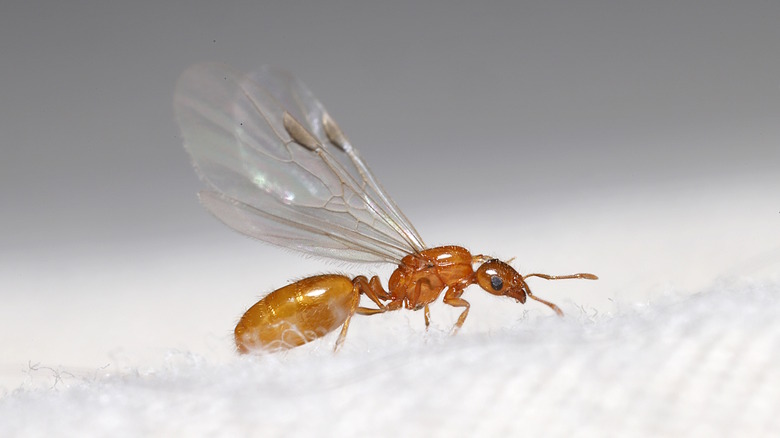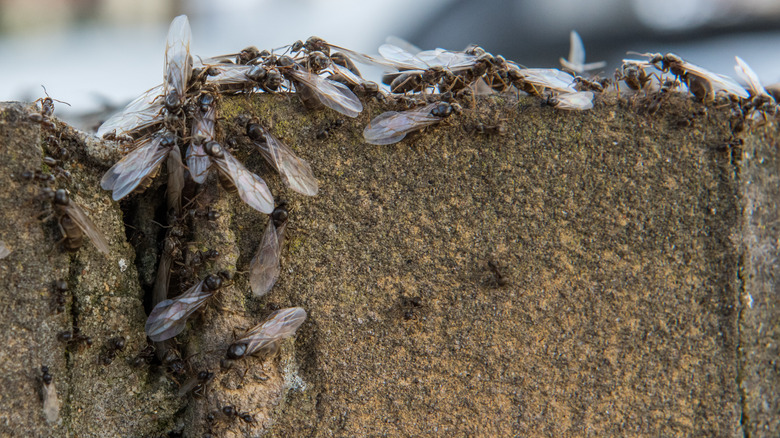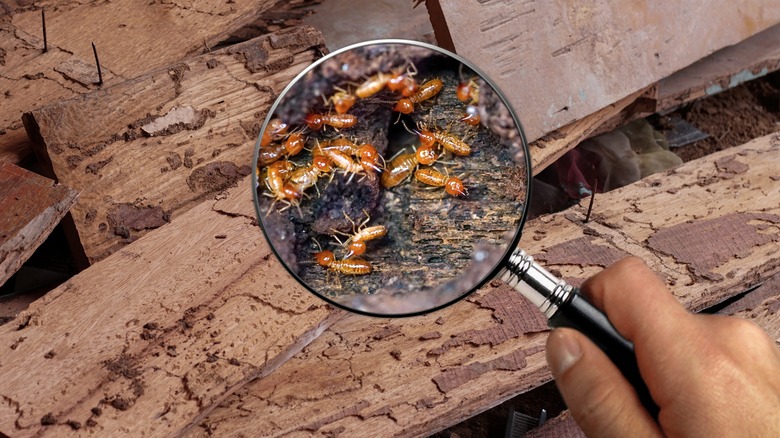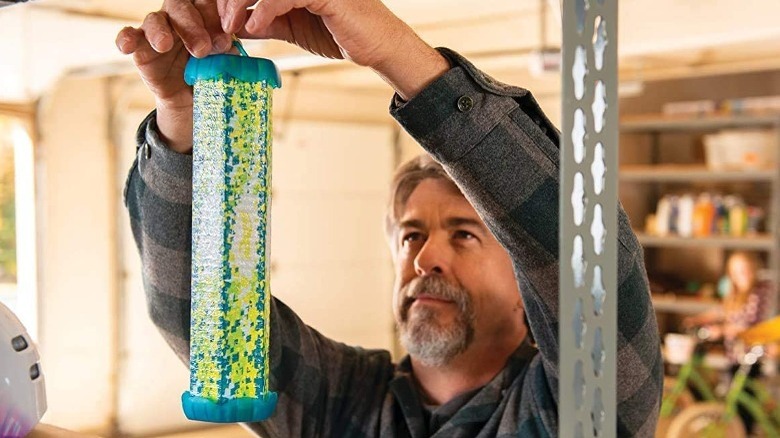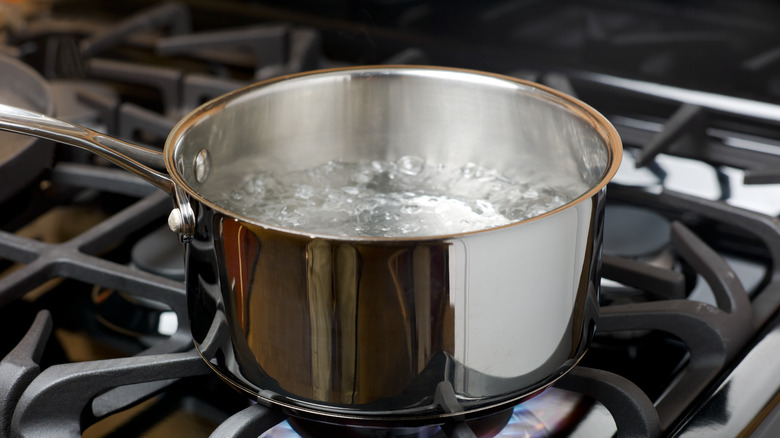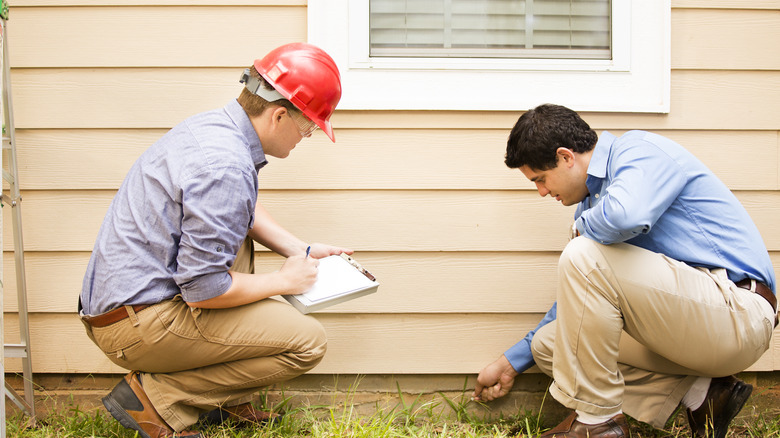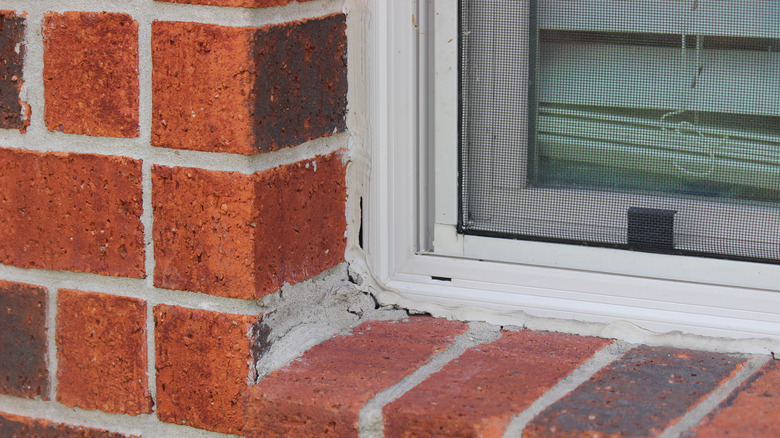What Causes Flying Ants In Your House And How Do You Get Rid Of Them
We may receive a commission on purchases made from links.
Have you noticed some flying bugs in your house that look like ants? Your eyes aren't tricking you. Flying ants — also called swarmers or alates — are a real thing. They are the fertile female and male ants setting out from their original home to create a new colony. Seeing them flying outside is bad enough, but if you've noticed them flying in your house, it can be unsettling, to say the least. Who wants a new colony of ants making themselves at home right in your kitchen, living room, or basement?
It is essential to learn what can attract them to your home, how to get rid of them, and what steps you can take to keep them from coming back. Without this information, you could soon be facing an infestation in your home, which probably sounds like the stuff of nightmares. Read on to learn more to help you regain your space and say goodbye to the pests.
Why you're seeing flying ants in your home
Before you can think about trying to get rid of flying ants, it is important to understand why you might be seeing them in the first place. They enter a home mainly because they're searching for food and moisture. If you only see a few flying ants in your space, you may not have an infestation. They could have just entered through an opening, trying to find a swarm. However, if you see a swarm of ants, that indicates that they have established their colony in your foundation or within the walls somewhere. In this case, it probably goes without saying that you'll need to take steps to get rid of them.
As if the presence of the ants themselves wasn't bad enough, there's another reason seeing these pests in your home isn't a good sign. Flying ants are attracted to decaying wood. Unlike termites, they don't eat the wood. However, they do bite through it to make their nests and tunnels. So, if you're seeing flying ants in your home, you'll also need to locate and address the decaying wood problems you're facing.
How to tell the difference between flying ants and termites
As mentioned above, both flying ants and termites are attracted to damaged wood. It can be easy to confuse the two pests, but proper identification is important for treatment and remediation. While termites and flying ants may look similar at first glance, there are some key differences in their appearance.
You'll need to get a closer look at their body to identify which insect you're dealing with. Start by looking at the wings. If they are uniform in size, you have termites. If the forewings are larger than the hind wings, then you're dealing with flying ants. Each of these insects' antennae also looks different: Termites have straighter and shorter antennae compared to the longer and segmented antennae of flying ants. Flying ants also have a narrower waist than termites. Finally, individual termites tend to stay more hidden, unless they're swarming. You're more likely to see a lone (or a few) flying ants away from the rest of their colony.
Vacuum up flying ants
Now that you understand how to identify flying ants and why you're likely seeing them in your house, we can get into what you really want to know: How to get rid of the winged pests. The first thing you'll want to grab is your vacuum cleaner. Use the attachment wand to suck up the ants. Vacuuming can be especially effective if you see a large swarm of them, since it can help you quickly eliminate several simultaneously.
After you've vacuumed up as many ants as possible, empty the dirt cup outside (or even pour it into a bucket of hot water outside). If your vacuum has a bag, remove the bag, place it in a plastic trash bag, tightly seal it, and leave the bag in your outside garbage can. The last thing you want is for the flying ants to get right back into your house after you've sucked them up.
Create a dish soap and peppermint oil spray
While some chemical pesticides can help get rid of flying ants, their questionable ingredients make them less-than-ideal for use inside a home. Fortunately, you can make your own flying ant killer using ingredients you may already have under your kitchen sink and in your pantry. Add 2 cups of water and 2 tablespoons of dish soap to a spray bottle. Next, add about 10 drops of peppermint oil to the bottle, return the lid, and give it a good swirl to combine the ingredients.
Spray the mixture directly on any ants you see and around areas when they have been swarming. When the ants come into contact with the soap, it will stick to their body and cause them to become dehydrated. The peppermint oil will also help kill them by causing them to suffocate. Cinnamon, tea tree, clove, and cedarwood essential oil also work as ant repellents. You can use one of those instead of the peppermint oil if you have none.
Set up glue traps
Setting up some glue traps around your home can help catch flying ants and prevent them from mating and wreaking havoc. Commonly referred to as sticky fly traps, the traps are formulated with special glue. Whenever a flying ant lands on them, they'll become stuck and unable to fly away.
You can find sticky traps online or at a local hardware store. They come in several varieties; some are designed to hang on the windows or from the ceiling, while others feature a self-standing design. Just add a little sugar or honey to the trap to help attract the flies. Keep an eye on the glue, and replace it once the surface is covered with ants. If you don't want to spend any money, you could even make your own DIY traps using materials you have around the house. Place duct tape, sticky side out, over your surfaces or attach it to the windows using some scotch tape. Sprinkle a little sugar on the tape and wait for the ants to flock to it.
Destroy the colony with boiling water
Getting rid of individual ants in your home can help, but it won't be sufficient to fully rid you of the infestation. For that, you'll need to go after the colony as a whole. The first step will be to locate the colony itself. This can be easier said than done, but see if you can follow one of the ants back to it. You'll know when you've found it, as it will look like a vast swarm — yuck.
If you are able to locate the colony, you can take it out with the help of some boiling water. Pour a large pot of boiling water directly over the colony or the hole from which they enter and exit. You may need to repeat this a few times if you still see ants flying around. In some cases, the colony may be inside your walls, foundation, or in another location you can't access. If this is the case, you will need to skip this step and move on.
Hire a professional
Sometimes, following the steps above will be sufficient to rid your home of flying ants. Other times, you may find you are still plagued by them after trying everything you can to get rid of them. In these instances, calling a professional exterminator might be the best choice to help you solve the problem once and for all.
As mentioned earlier, there may be times when the colony is inside the walls or foundation of a home. If so, you won't be able to reach it on your own, and it is less likely you'll eliminate them with just a vacuum or some sticky traps. On the other hand, a professional will have the necessary tools to help them find and eradicate the pests, even if they are in a more hidden and hard-to-reach area of your home.
Take steps to prevent flying ants from returning
Once you have finally gotten rid of your flying ant problem, you want to take steps to prevent them from returning to your home. One of the top things you can do is block their access. They can get in through any opening on your home's exterior, so you'll want to thoroughly inspect your home. Look for any cracks in the sealing or along windows and doors where the pests could get in. Seal these cracks with caulk. Also look for broken vents or opened pipes that could give the bugs access.
Remember, flying ants are also attracted to rotting and decaying wood because they like to nest in it. If you suspect you have any damaged wood, call in a professional to treat and/or replace it. Not only will this help keep the ants from returning, but it will help to maintain the structural integrity of your home.
